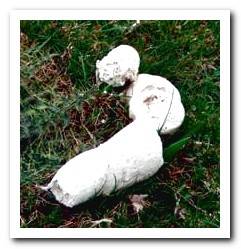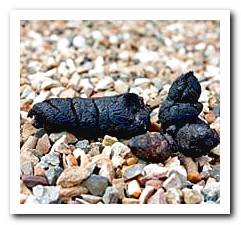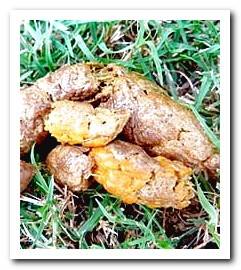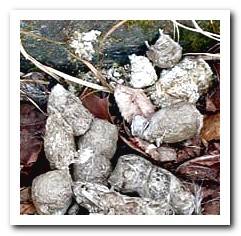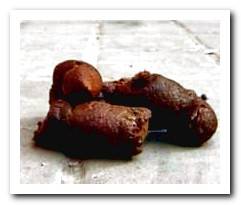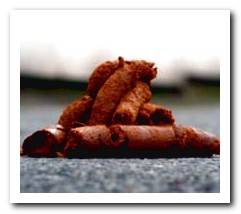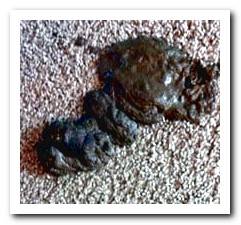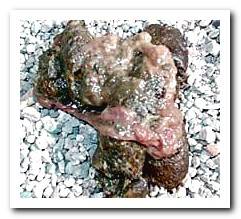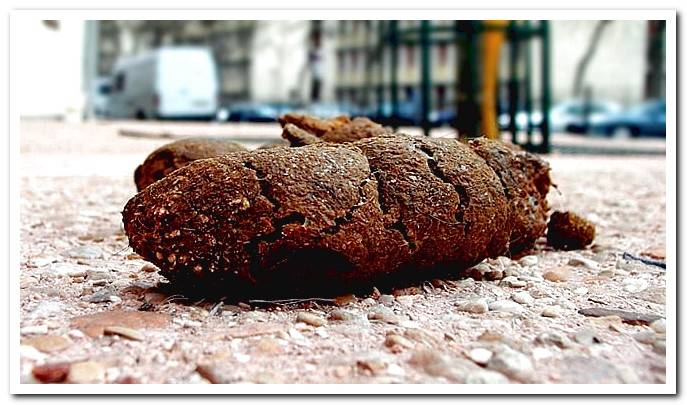
Surely you have already realized that not all dog poops are the same, not only because of their size or consistency but also because of their color. Even our dog’s feces can vary in color or texture, depending on various factors that we are going to analyze.
The color of a dog’s poop can give us much more information than we think, from clues about its health and / or type of diet, to warning us of the presence of possible parasites and / or digestive problems.
Index of contents
- 1 Why are there different colored dog poops?
- 1.1 White or off-white poop
- 1.2 Black or dark brown poop
- 1.3 Light brown or yellowish poop
- 1.4 Greenish or gray colored poop
- 2 Interpretation of poop texture
- 2.1 Pools of hard consistency
- 2.2 Pools of medium consistency – soft
- 2.3 Pools of watery consistency – diarrheal
- 2.4 Very shiny poop, with mucus and / or worms
Why are there different colored dog poops?
The main reason why one poop is lighter or darker than another is the dog’s diet. Dogs that eat natural food how the Barf DietThey have consistent stools, without much shine and a natural brown color.
However, dogs that are fed with feed, have less consistent and much bulkier stools, due to the enormous amount of filler used in its formulations.
White or off-white poop
They are normally dog poop that feed on natural food (BARF) and that discolors in a few hours, turning white. They may also be due to an excess of calcium in the diet, excess bones or eggshells.
Black or dark brown poop
A high amount of meat in our dog’s diet can cause his feces to be very dark or black. But coagulated blood can also provide that color to the poop of a dog, so it is always advisable to consult with the vet if our dog regularly poops this color.
Light brown or yellowish poop
An excess of products derived from milk such as cheese, whey or yogurt It can cause the color of our dog’s poop to be yellowish or light brown. Some uncommon foods in a dog’s diet or an excess of corn in the feed formulation also contribute this color.
Greenish or gray colored poop
Some digestive problems like pancreatitis, can lead to stool of an unusual, greenish or grayish color. Too an excess of vegetables in the diet It can cause that color in a dog’s poop.
Interpretation of poop texture
Just as color can give us clues about a dog’s diet or health, texture can also give us important information. This does not mean that we have to be experimenting with our dog’s poop, but when we pick it up with a bag to throw it away, we will know what its texture is. Or with a simple eye appreciation we can also know.
Pools of hard consistency
Dogs fed a natural diet often poop a consistency that could be classified as normal. Their poops are soft but shaped and not very fragrant.
Dogs fed with feed with high amounts of astringents like rice or beet pulp, they have poops of hard consistency. Although much more voluminous and smelly.
Some people mistakenly believe that since their dog makes hard poops, it is feeding it with a good feed, when in fact it is feeding it with a feed with an excess of astringents, unnatural for its feeding.
Pools of medium consistency – soft
Curiously, when our dog’s poops are not rock hard, we worry that something is possibly wrong with him. We could not be more wrong … dogs fed with feed that do not contain an excess of astringents such as rice, should do soft poop.
Pools of watery consistency – diarrheal
When something goes wrong in our dog’s digestive system, normally manifests itself through the appearance of watery stools, diarrheal and generally very smelly. The reasons can be multiple but they should never be interpreted as a normal or healthy stool.
Poor consistency or diarrheal stools can be caused by poor diet, a health problem, a viral or parasitic problem. Stress can also cause this type of stool.
Very shiny poop, with mucus and / or worms
Very shiny poops tell us that there is an excess of fat in the diet, something that can damage the dog’s pancreas in the medium term. If its appearance is watery or mucous, it may indicate the presence of some intestinal bacteria that causes the detachment of the flora. But it could also indicate the presence of some intestinal parasites like giardias.
If we observe the presence of some type of worm or earthworm, we should immediately go to the vet with a stool sample. Each type of parasite requires a specific treatment, so only after analyzing its feces can it be determined which is the best treatment.

